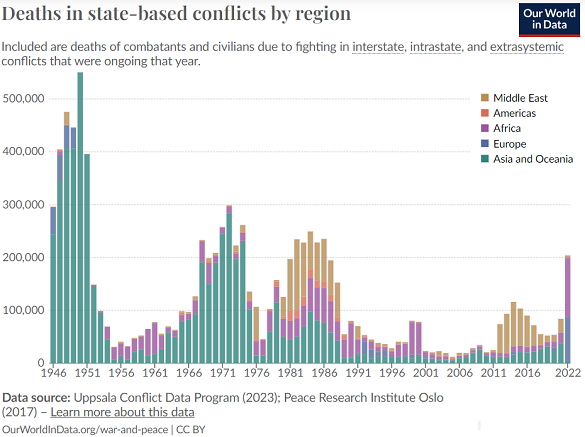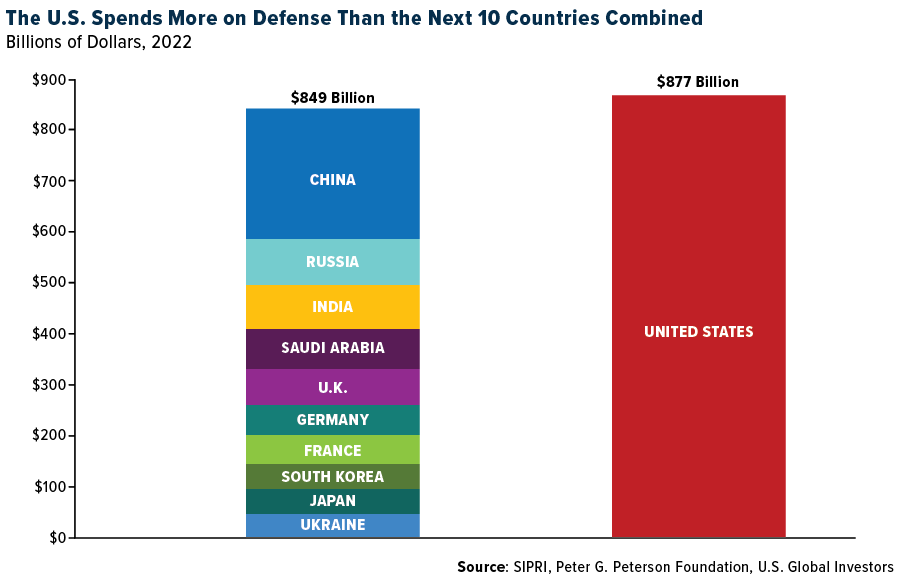Old-Aged Nato Faces New World of Warfare
The Nato alliance just turned 75 years old...
LIKE IT or not, the world is confronting a new age of warfare, marked by escalating conflicts, writes Frank Holmes at US Global Investors.
Nato, the North Atlantic Treaty Organization, commemorated its 75th anniversary at the start of April, at a time when the 32-member alliance finds itself in an increasingly precarious position.
Polish Prime Minister Donald Tusk's warning that Europe has entered a "pre-war era" underscores the geopolitical challenges going forward and the need to shore up defenses.
Like it or not, the world is confronting a new age of warfare, marked by escalating conflicts (including those involving non-state actors like Hamas and the Houthis), China's growing influence and the rapid advancement of artificial intelligence (AI) in military applications. Russia's ongoing invasion of Ukraine has heightened concerns about spillover violence, raising questions about Nato's long-term military support for Kyiv.
Since the alliance's founding in 1949, the absolute number of armed conflicts globally, as well as the number of war-related deaths, has significantly declined.
But in more recent years, for reasons that will be historians' job to unpack, hostilities have escalated. Data provided by Our World in Data shows that the total number of armed conflicts across the globe was higher in 2022 than in any year going back to 1989.

This alarming rise in violence has led to a significant surge in defense spending among Nato allies, with as many as 18 member nations expected to allocate at least 2% of their GDP to defense this year, up from just three countries in 2014, according to the group.
The changing nature of warfare goes beyond conventional nation-state conflicts, with non-state actors increasingly involved in armed conflicts. The rapid development of AI and machine learning – used in autonomous weapons such as Ukraine's Saker Scout drone – is also raising concerns about their potential use in cyber, physical and biological attacks.
SIPRI, or the Stockholm International Peace Research Institute, reports that European states have nearly doubled their imports of major arms between 2019 and 2023, but the surge is not limited to Europe. The US – which already outspends the next 10 countries combined on national defense – is closely monitoring China's military modernization efforts. Beijing plans to boost its defense budget by 7.2% this year, focusing on developing advanced technologies such as hypersonic missiles and AI.

For investors, rising defense spending presents a compelling opportunity.
In the US, over half of the Department of Defense (DoD) spending goes to military contractors, with the total contract spending amounting to approximately $400 billion in 2021, the most recent year of data. While this sum is distributed among thousands of contractors and subcontractors throughout the country, the "Big 5" firms – Lockheed Martin, Boeing, RTX (formerly named Raytheon), General Dynamics and Northrop Grumman – received nearly 30% of all DoD contract Dollars.
Meanwhile, the list of US defense industry's AI suppliers is relatively diverse, with 300 contracts distributed among 249 unique vendors in a recent dataset. Of those, only 36 vendors were awarded multiple contracts, and just eight won three or more contracts, including major players Lockheed Martin and Northrop Grumman, according to the Center for Security and Emerging Technology (CSET). This concentration of AI contracts among a few key players suggests that these companies are well-positioned to benefit from the growing demand for innovative military solutions.
Investing in defense stocks, like other areas, carries risks. The sector is heavily influenced by government policies, geopolitical events and public sentiment. Changes in political leadership, shifts in foreign policy and fluctuations in public support for military interventions can all impact the performance of defense stocks. The industry is subject to strict regulations and oversight, which can affect companies' ability to secure contracts or export their products.
Despite these risks, I believe the long-term outlook for defense stocks is positive. As nations worldwide increase their military spending, companies at the forefront of defense technology and innovation are likely to benefit. The US defense industry, with its strong presence in the global arms trade and its cutting-edge AI capabilities, is particularly well-positioned.
Nato has its detractors, but its role in maintaining stability has never been more vital. For astute investors, this presents a unique opportunity to capitalize on the growing demand for innovative defense technologies, particularly from major US contractors.












 Email us
Email us
